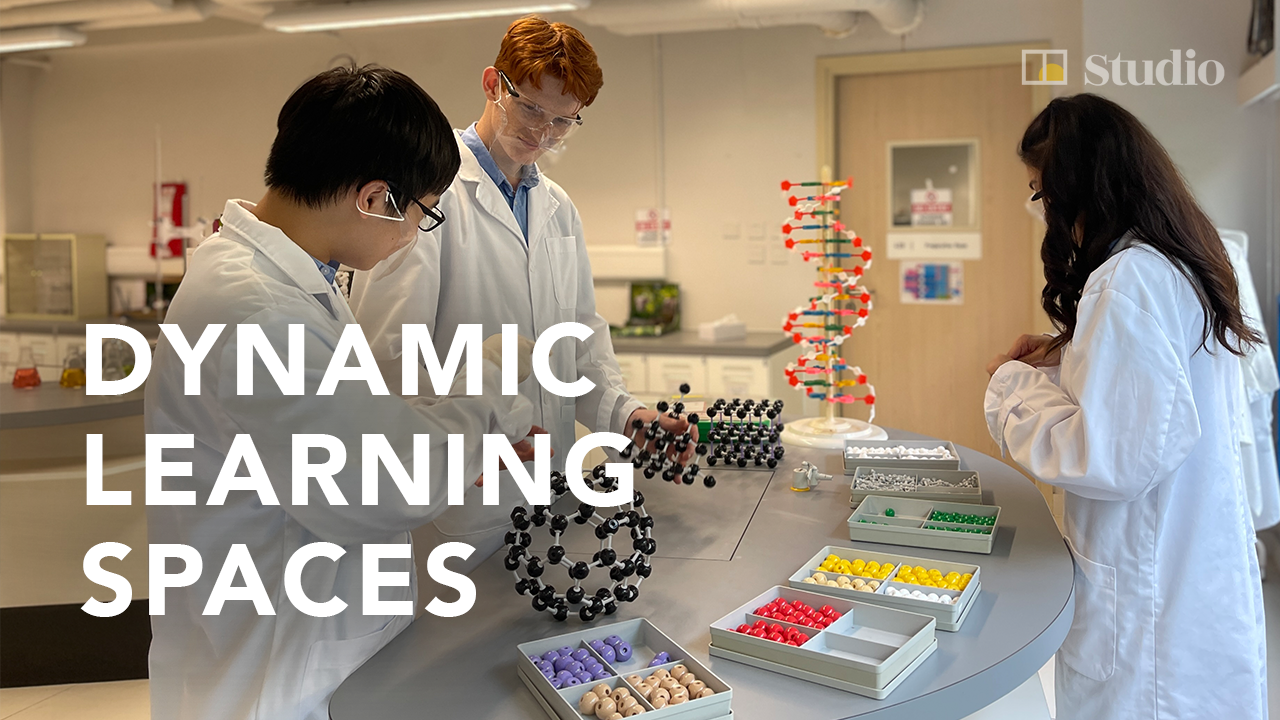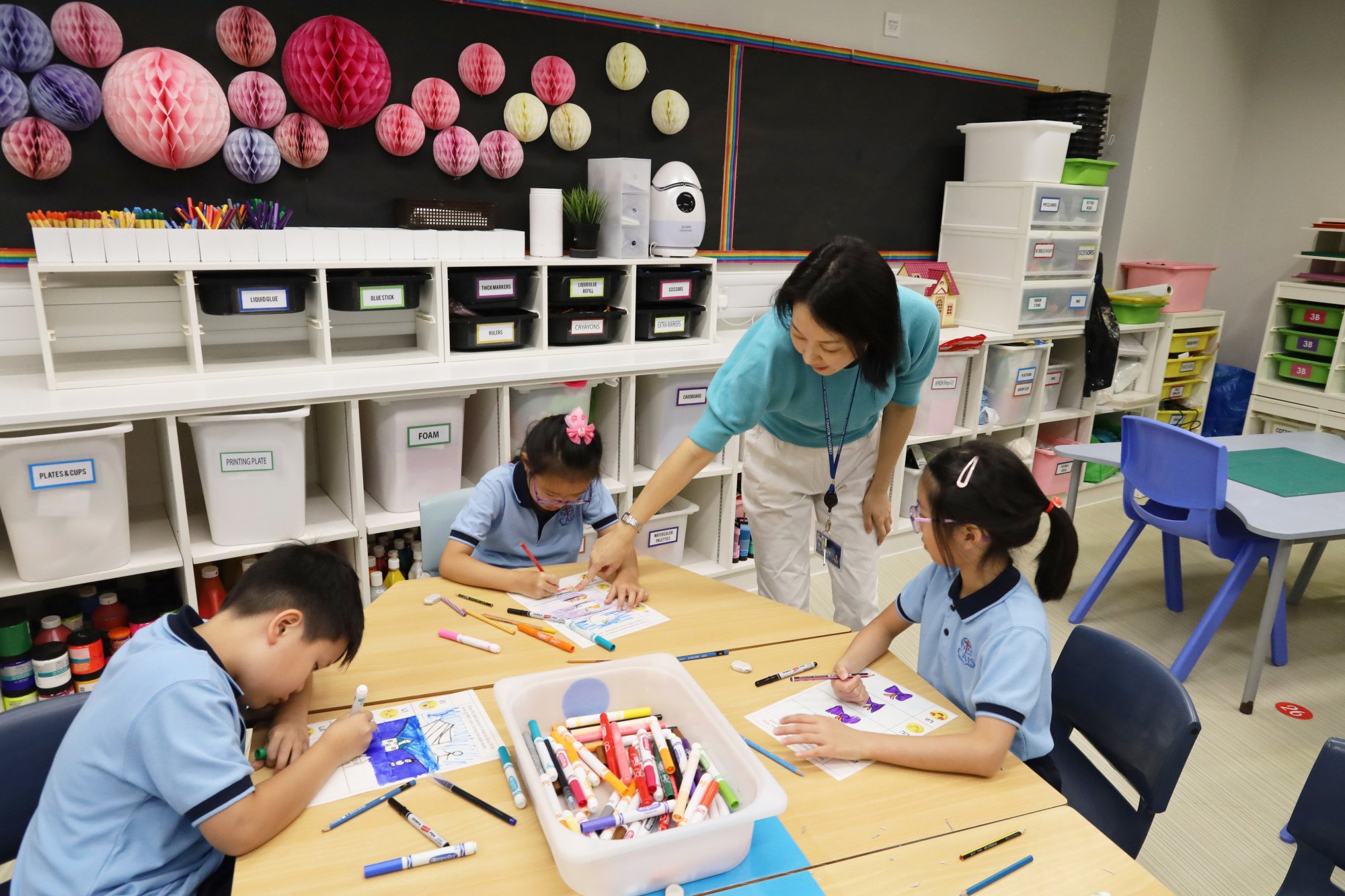
03:30
Why dynamic learning environments enhance student creativity
How dynamic learning environments at schools encourage creativity to help students excel
- Classrooms and other teaching spaces must be inspiring, engaging and safe so children can study, play and thrive, says Richard Vanderpyl, head of Christian Alliance International School
- Its Hong Kong campus offers five science labs, gym with climbing wall, rooftop football pitch and art rooms, while outdoor after-school and holiday programmes cultivate other skills
Talented teachers can help students to learn anywhere, but holding lessons in an engaging environment will significantly enhance their learning experience, Richard Vanderpyl, head of school at Hong Kong’s Christian Alliance International School (CAIS), says.
“Spaces are incredibly important,” Vanderpyl says on his return to EdTalk, South China Morning Post’s recurring video series of interviews, in which teaching experts discuss pertinent issues surrounding education. “They can spur creativity, curiosity and be a place in which students learn to interact with each other.”
However, Vanderpyl, whose school has over 1,600 students representing more than 26 different nationalities, says to ensure a school’s physical spaces are environments conducive to learning, educators need to be designing interiors that are inspiring, engaging and safe for children.
Educators should be asking themselves questions during the design stage, he says, such as “Are there colours, interesting things on the wall and sculptures around the place to create a sense of wonder? Is it comfortable?”

CAIS – a through-train school offering the Alberta curriculum and International Baccalaureate Diploma Programme, which caters to children aged five to 17 at its preparatory, lower and upper primary, and secondary sections in Lai Chi Kok, Butterfly Valley, Kowloon – prides itself on offering these types of dynamic learning environments throughout its campus’ facilities.
They include 70 classrooms, five science laboratories, a 260-seater lecture hall, fitness centre and nine other impressive multipurpose areas. The art room offers resources covering a wide range of traditional and creative artistic mediums, including a kiln. There are two gymnasiums – both with full-sized basketball courts – and one also features a rock-climbing wall with an auto-belay system.
CAIS also offers a rooftop, seven-a-side, artificial-turf football pitch, which meets official Fifa standards, and a whole floor dedicated to music. Its drama studio is a highly versatile space for staging plays and theatre performances.
If students love and enjoy the school, their learning becomes easier
“The school is pretty new, so we have the most modern, up-to-date facilities that really do cater for everybody’s needs,” Vanderpyl says. “These extend beyond the classrooms where you can argue that it’s around the cognitive level of thinking. It is just a fun place for students to be.”
Fun spaces help to foster a child’s development and achievements, he says. “If students love and enjoy the school, their learning becomes easier. We see that every room has been designed towards enhancing and engaging students in their learning.”

Vanderpyl believes that learning spaces need to extend beyond the school’s premises so that children are able to continually grow and develop. “We can often be confined to the school grounds and think that’s where it all takes place, and yet the children go home every day – they have weekends and they go on holidays. So why not also show that those are places to learn, too?”
To motivate children to learn away from its campus, CAIS offers robust after-school and holiday programmes for those students who are keen to take part. “We have lots of camps that the students go on,” Vanderpyl says.
“They are encouraged to go outdoors. Recently, they went out to Sai Kung and did rock-climbing, trust-building games and lots of cooperative learning activities. It’s about offering students lots of different opportunities.”
He adds: “Our junior primary school pupils go on beach clean-ups, and every year we send secondary school students overseas on what we call our discovery days. At the heart of the discovery days is service learning. It’s about what I can do for others and the environment.”

As impressive as these facilities and programmes sound, they are all in place to serve CAIS’ mission to cultivate learners with knowledge, skills, integrity and discernment, so that they become students who are the best for Hong Kong and the world when they eventually graduate from the school.
“We want our students to be able to look at what’s going around them, think critically and be able to speak about that with a heart that is soft and can show compassion,” Vanderpyl says.
Our goal for our students is that they are wise and they know how to use that wisdom
The school will continue to focus on nurturing students with wisdom, integrity and a heart to serve others, he says. “Our goal for our students is that they are wise and they know how to use that wisdom. They have stature, which for us means influence, and they’ve got the ability to shape their surroundings.
“They can have all the academic knowledge, but they need to also have the willingness to serve others, because if they do nothing with the knowledge, it will just stay with themselves.”

